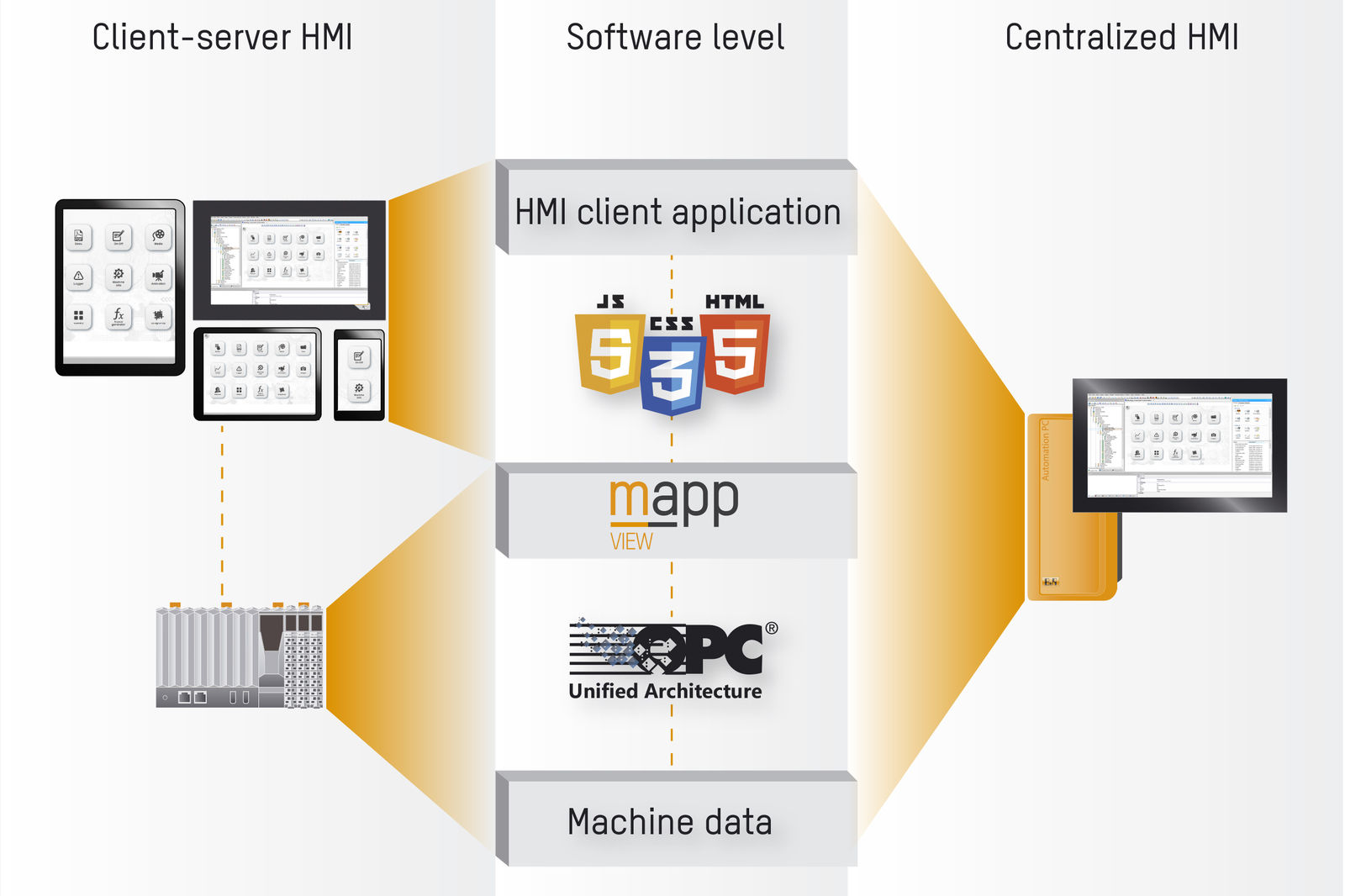Once a machine and its HMI application are operational, even a minor adjustment can have major consequences. Entire production lines are halted while the software developer – who had to make an extra trip for the call – attempts to get the machine's software running again. An effective way to keep maintenance costs from getting out of hand is with modular software. Applications whose functions are encapsulated in modular elements are considerably easier and less expensive to maintain.

"Over the course of a machine's service life," explains Wolfgang Portugaller, head of B&R's system architects, "you spend far more on adapting and maintaining the software than you did to develop it in the first place." On top of direct costs for things like on-site service calls, secondary costs can quickly add up when a machine or an entire line needs to be shut down, or when a software update introduces new errors into the system. In their attempts to lower the total cost of ownership, OEMs are seeking ways to make software easier and less expensive to maintain.
Modern software architecture
Today's more advanced software architectures make it possible to decouple the HMI application from the machine's control logic. "Conventional HMI solutions are tightly interlinked with the machine application," explains Portugaller. "That means that if you make a change to the control logic, you also have to update the HMI application. Conversely, if you redesign the user interface to be more friendly, you also have to adapt the control logic."
To display the value of a certain process variable, for example, the variable itself would often be linked directly to the corresponding UI element. And that's no problem at all – as long as the machine runs unchanged for 20 years. "Unfortunately, that is hardly ever the case," says Portugaller. Process variables are renamed; UI screens are rearranged; new users are added. Even a small adjustment can often call for a surprising amount of reprogramming.
One way to alleviate this problem is by following the software design principle of separation of concerns (SoC). In the context of HMI software, SoC means maintaining a clear separation between the layout of UI screens and the data to be displayed on them.
Data exchange via OPC UA
"We applied this principle rigorously to every aspect of our new mapp View HMI solution," explains Portugaller. For communication between the control and HMI applications, mapp View relies on the independent OPC UA standard. To display a temperature value, for instance, the HMI application doesn't query the process variable in the control application, but rather the value provided by the OPC UA server on the machine's controller.
Reduced potential for errors
"The advantages of this type of architecture become particularly evident," notes Portugaller, "when it comes time to reuse one of the components, build a new variant of the machine or implement changes during maintenance." To modify the range of values for a process variable – even one that is displayed on 10 different UI screens – you just have to make the change once on the OPC UA server. This virtually eliminates the potential for copy-and-paste errors or overlooked instances.
There is also one very important benefit to using OPC UA. Rather than simply raw data, it also provides contextual information in the form of metadata. For a temperature variable, this means that you get not only a numerical value, but also the physical units you need to interpret it, so there is no chance of conversion errors. The units can be changed with a simple click or tap on the UI screen, regardless of which units are used in the control application.

Wolfgang Portugaller, Head of System Architects, B&R
Change setpoints safely
The ability to transmit value limits is also very helpful. The UI immediately alerts operators if they enter a setpoint outside of the permitted range, so there is no need to query the control application explicitly. If a maintenance technician adds a new coolant, the setpoints in the control application are adjusted automatically, and the OPC UA server on the machine's controller automatically provides the changed data to the HMI application.
Manage access easily
"Access rights are another important topic related to setpoint changes," adds Portugaller. Information about which roles are permitted to change which values is included along with the OPC UA metadata. B&R's role management system makes it easy to define and manage roles, access levels and users. "At runtime, you're free to add users and assign them a role whenever you want. There's no need to make changes in the role management system itself."
B&R first introduced mapp View at the 2015 SPS IPC Drives. The HMI solution is an optional component of the Automation Studio engineering software available with Version 4.2.5 LTS or higher. Pilot customers have been using mapp View for about a year now, and the first machines are already being used and maintained. "Our customers are thrilled about how easy software maintenance is with mapp View," says Portugaller. "They are surprised to see just how large of an impact the architecture of their HMI software can have on the total cost of maintaining their machinery and equipment."
Author: Stefan Hensel